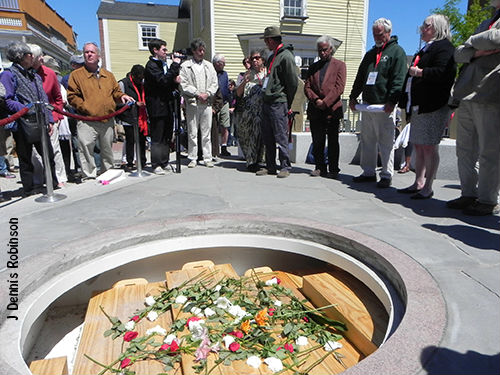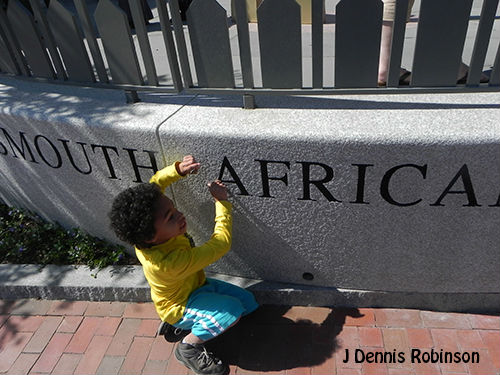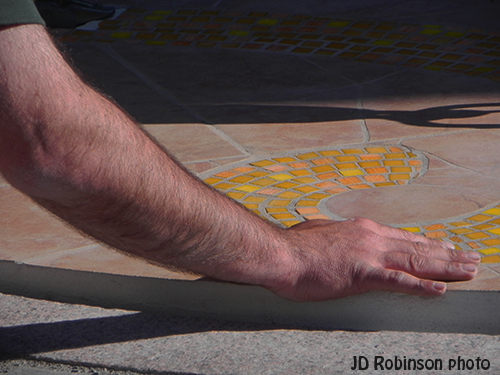Changing the Meaning of Space
August 18th, 2015
TMS Architects is delighted to have our second August post from local Portsmouth historian, J. Dennis Robinson. As is usual with Dennis, his examination of the past and the history of Portsmouth often leads us on voyages of discovery of the present. This article describes a very special place in Portsmouth; the Portsmouth African Burying Ground Memorial Park.

Opening ceremonies of the Portsmouth African Burying Ground Memorial Park in May 2015. Source: J. Dennis Robinson
I just looked up the word “architecture,” and I’m more confused than ever. My dictionary lists seven separate meanings including “the structure of everything.” Wow, heavy stuff. That means an architect is the person who designs the structure of everything. It’s downright godlike.
A Google Image search on the word “architecture” serves up mostly gigantic curvilinear structures that look like settings for a science fiction film. So Google, at least, thinks that architecture is mostly futuristic. In rural New England, however, it still implies old-style buildings–Colonial, Federal, Georgian.
But what about the space between our buildings? And what happens when that empty space suddenly changes, like when a street becomes a park?
That happened recently in Portsmouth, when a nondescript chunk of Chestnut Street became the Portsmouth African Burying Ground Memorial Park. It’s a rare thing when a road is closed and transformed into a memorial.
And let’s be clear. We did not “discover” the ancient burying ground in 2003 when the first coffins were revealed. We knew that the cemetery was under the street. We just didn’t know exactly where.
And for those who plan to visit, it’s important to note that the park area is only the tip of the iceberg, There are still up to 200 burials under the surrounding streets, sidewalks, backyards, driveways, and parking lots.
One day the residents of Chestnut Street looked out their windows onto a typical paved road. Now that area has taken on a new role. It hums with deeper meaning. Hundreds attended the opening ceremonies of the memorial park in May when the ancient human remains were returned to the earth. Thousands have visited the site since. Countless thousands are coming.
There has been enormous national and international media interest in the “rediscovery” of the only African cemetery in New Hampshire’s only seaport. I got a call the other day from the people who produce a magazine that goes to 6.5 million Chevrolet owners. They plan to feature Portsmouth as a “hidden jewel” destination for motorists in an upcoming issue. They were especially interested in the Portsmouth African Burying Ground.
The memorial park is subtle, even understated. It does not shout about racial discrimination or preach or point fingers or name names.The gentle open space is designed for sitting, for gathering, for conversation and contemplation. You have to look quick or you might miss the site altogether.
But in Portsmouth, one thing is certain. This is not just a street any longer. From now on, it is a sacred place. It whispers of man’s inhumanity to man, and of our capacity to absorb change, and to forgive our trespasses. This is the architecture of emptiness, restraint, and transparency. It speaks, without the need for words, of the structure of everything.
Dennis Robinson is editor and owner of the popular website SeacoastNH.com and author of 12 books about history. His latest release is MYSTERY ON THE ISLES OF SHOALS: Case Closed on the Smuttynose Island Ax Murders of 1873. You can follow his history postings on Facebook. His newest website is www.SmuttynoseMurders.com
- ©TMS architects
- one cate street, portsmouth nh
- 603 436 4274







